Why You Need to Visit the Amazing Céide Fields Ireland
The Céide Fields are one of the most fascinating sites in Ireland — maybe even in Europe.
While the site takes a bit of imagination, and a guide is a good idea, it’s really an incredible site.
So I hear you asking me, “Lynne, what exactly are these Seeda Fields and where is it?”
Well put your student hat on and let me tell you all about this site in Ireland.
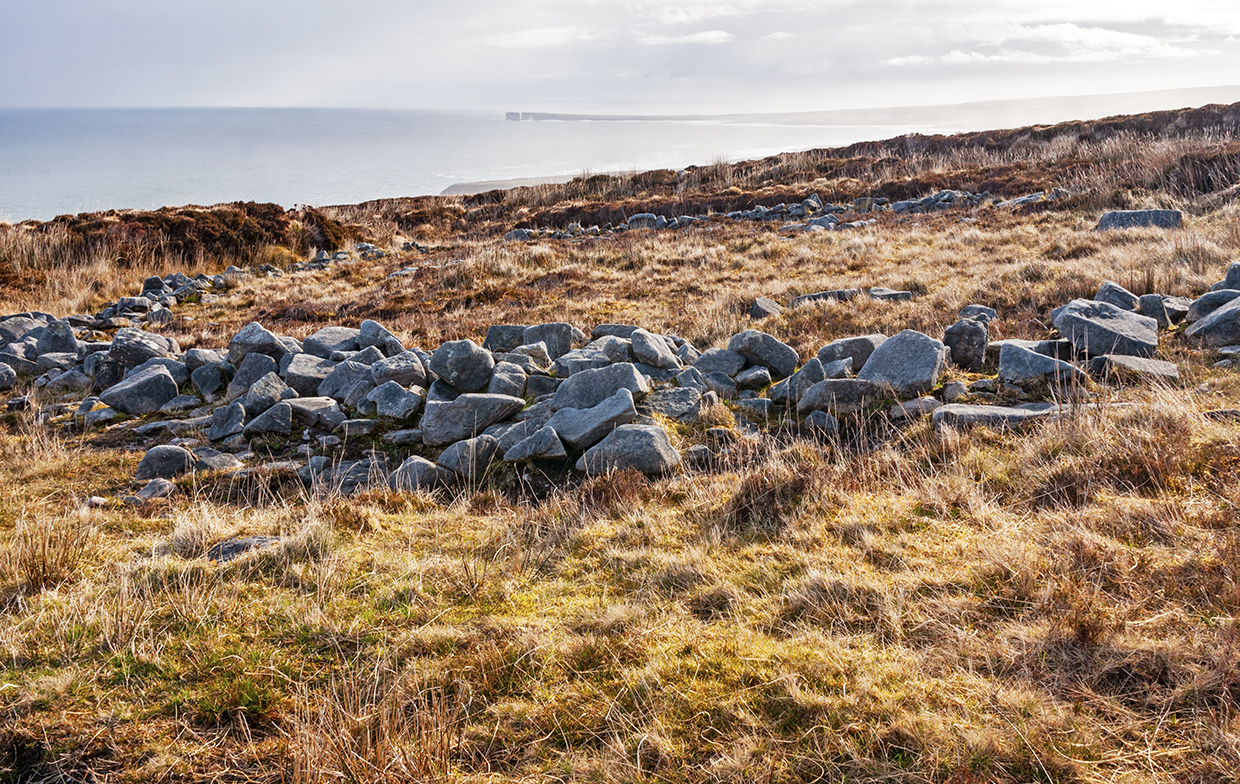
Where are the Céide Fields (and how the hell do you pronounce it)?
Let’s start with this — Céide is pronounced kay-ja.
I know.
One of those Irish words/translations that baffles the brain.
In Irish this spot is called Achaidh Chéide which means flat topped hill.
And that’s what the Céide Fields are — a flat topped hill — that also happens to sit above the Atlantic Ocean.
This site is located in the northern part of County Mayo, along the coast, and near the town of Ballycastle.
Northern County Mayo tends to not see as many visitors as other parts of the County nor as many travelers as other parts of Ireland.
But this area is rich in sites and natural beauty.
So now I hear you asking, “Okay. I know where it is and how it’s pronounced, but why are the Céide Fields worthy of my time and what the heck are they exactly?”
I’m so glad you asked.
What exactly are these Céide Fields?
This neolithic site contains stone walled fields dating back roughly 6000 years.
What does this mean?
It means that there was a farming community here 6000 years ago — so back in the Stone Age.
The implications of this mean that organized farming — a group of people coming together, planting crops, raising livestock — dates back much further than many scholars originally thought.
From the artifacts found, these people used wooden ploughs with a stone edge pulled by cattle (there were no horses in Ireland back then) to cultivate the earth.
It’s pretty cool to think that people 6000 years ago were actually growing their own food in this organized, thought out way.
So who found this site?
This is a great story.
If you know anything about this part of Ireland, then you know there is a lot of peat which is basically the turf here.
It’s bogland really — at least it has been for a long time.
Back in the 1800’s and early 1900’s people cut the turf/peat to burn in their fireplaces to heat their homes.
Well, back in the 1930’s near the village of Belderrig the local schoolmaster, Patrick Caulfield, kept coming across a lot of stones deep down in the bog as he was cutting the turf to heat his home.
He particularly noticed that the stones were in a uniform formation — so they weren’t just haphazardly in the earth.
Mr Caulfield also took note of how deep the stones were which indicated they must have been put there a very long time ago.
His son, Seamus, who studied archeology, years later investigated the area deeper and discovered the cultivated fields along with houses and tombs that had been under the earth for centuries.
Needless to say, it was quite the discovery!
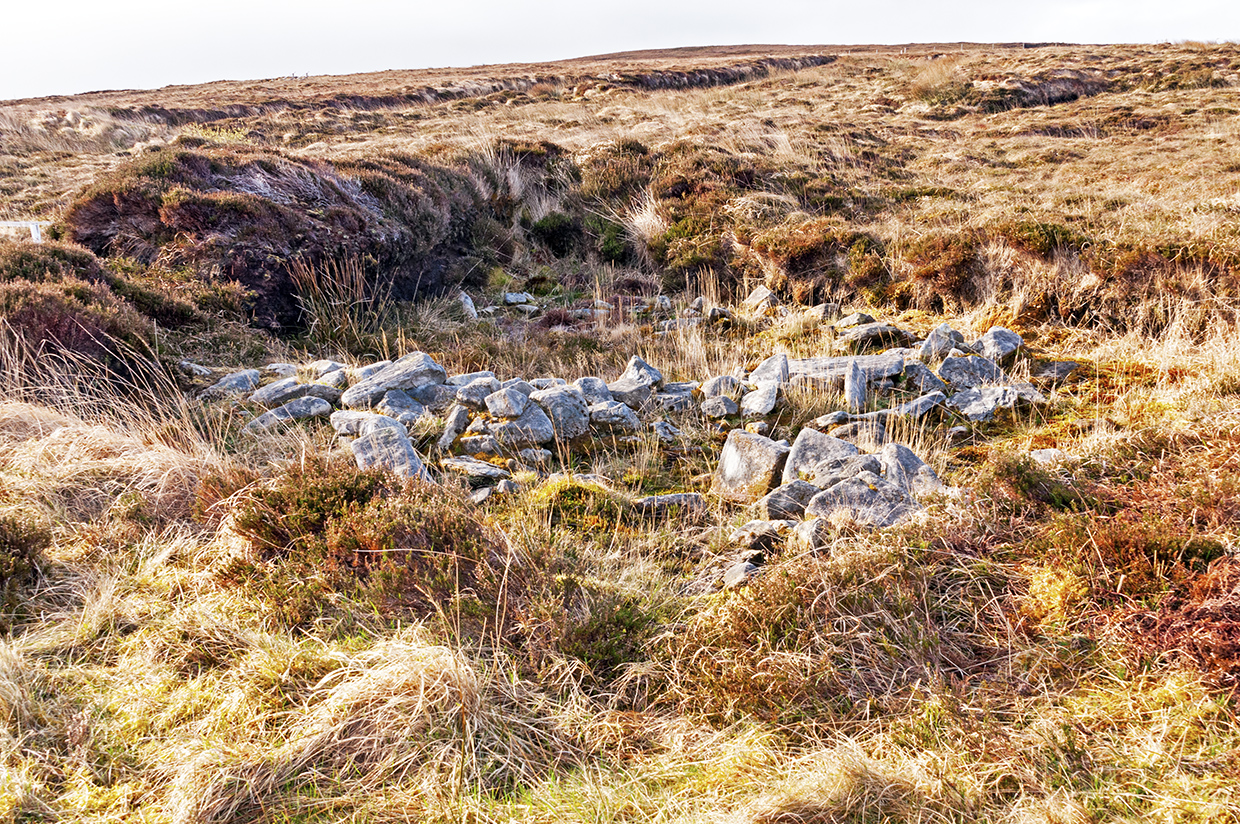
The award winning visitor center
I actually visited the Céide Fields a few years ago.
However I arrived a couple of days before the site was open to the public as it does close in winter.
I got lucky though as the B&B owner where I was staying knew someone pretty high up at the Céide Fields so I could visit — I just had to do it on my own.
The woman met me and gave me a brief overview of the Ceide Fields in the Visitor Center then I went outside to see the fields.
So while I had a little bit of time in the center, I didn’t get a lot of time.
However, what I saw was impressive.
First of all there is a 4000 year old pine tree in the middle of it.
This tree was unearthed from the nearby bogland.
The Visitor Center itself — the exterior and the interior — is made from natural materials — sandstone, oak, glass.
And Dr Seamus Caulfield — yes from above — helped spearhead the construction of the building.
There is a lot great information in this center, so don’t skip over it.
I’ll return to the Céide Fields and spend more time here and take a guided tour for sure.
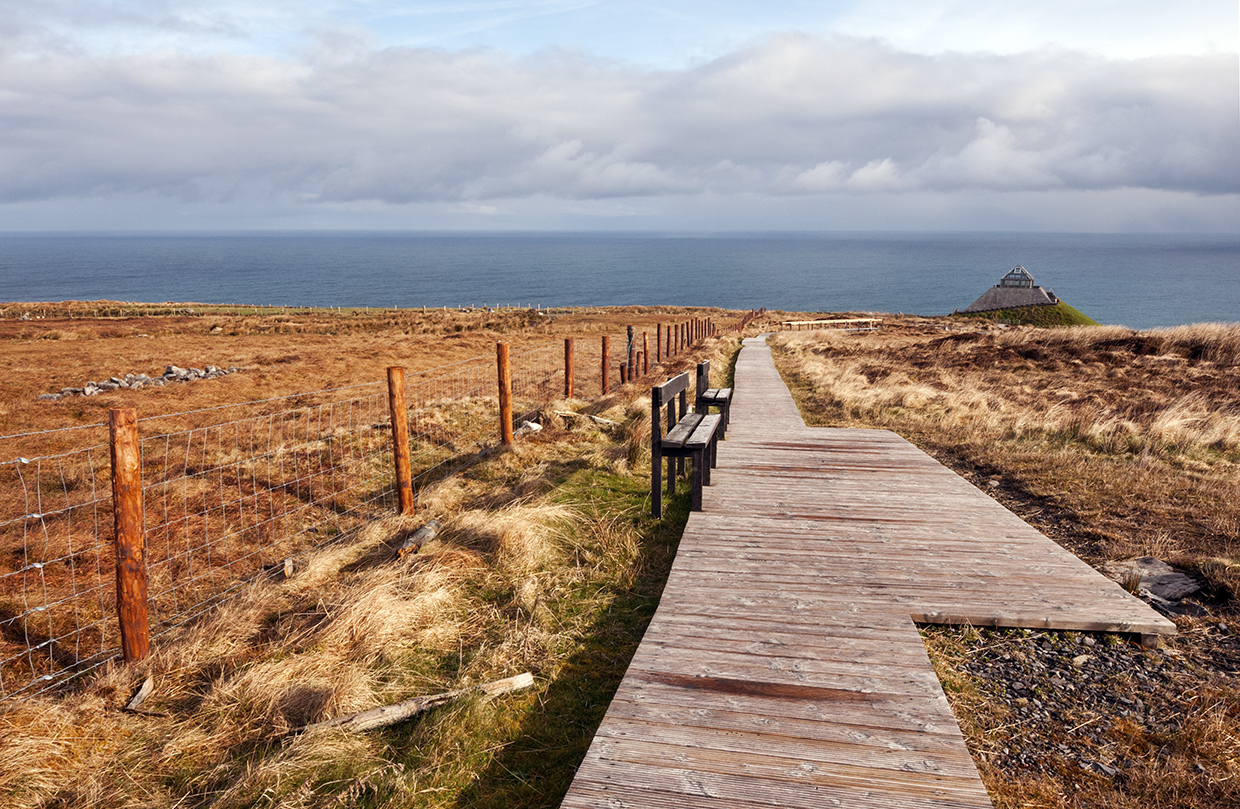
The stunning views
Even if you aren’t a history buff you still may want to explore the Céide Fields as the views from this site are amazing.
You really get a fabulous view of the North Mayo coast.
Cliffs, the roiling Atlantic, sea stacks, peaty bogland — the landscape is wild, beautiful and harsh all at once.
It’s really gorgeous — as long as the weather cooperates.
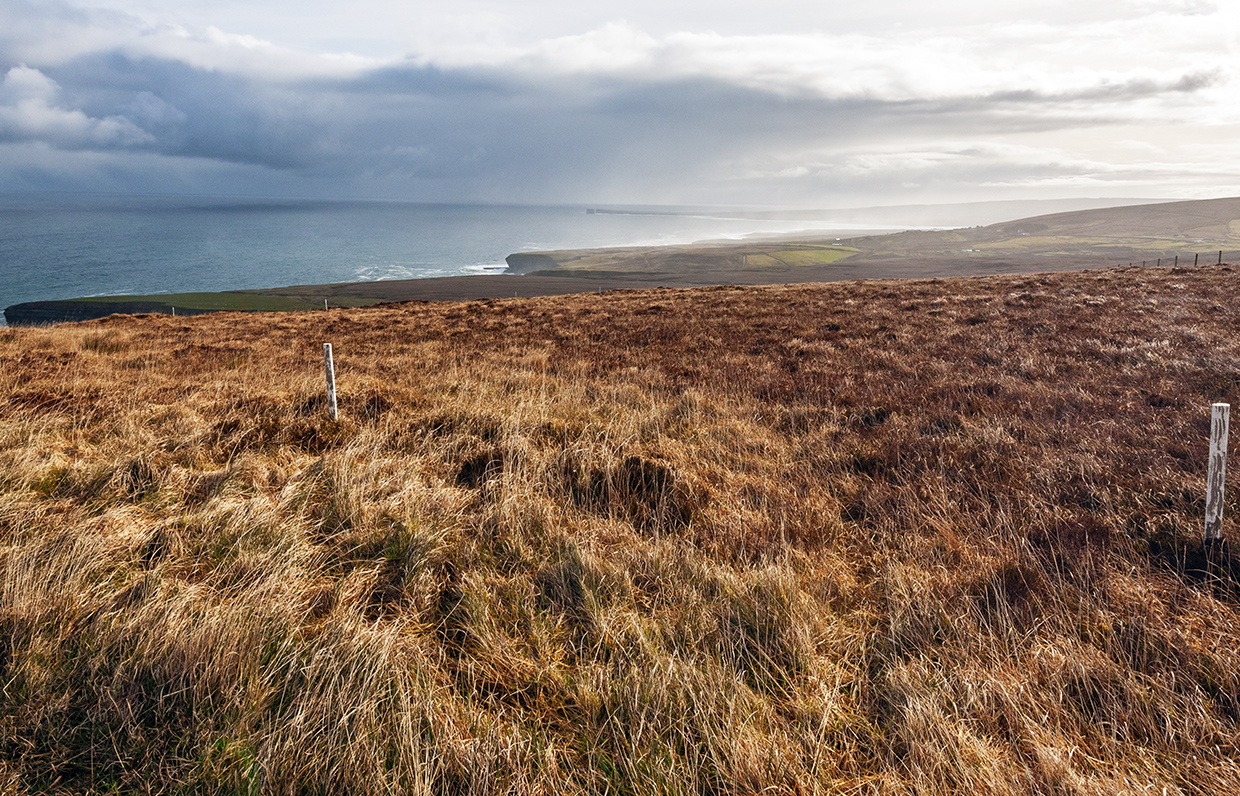
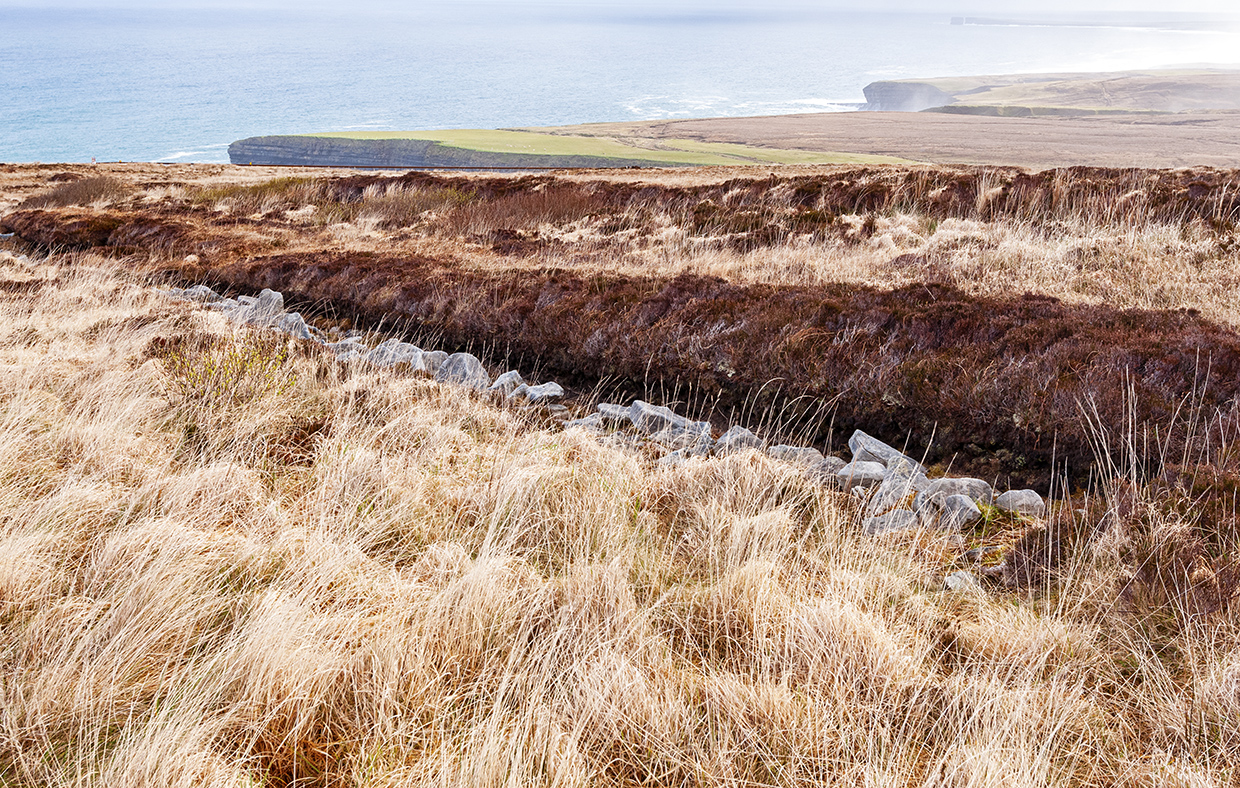
The fields
It really is remarkable that people farmed in this area 6000+ years ago.
Of course, the weather would have been very different so the soil would have been different as well.
These days the land is not fertile.
But 6000 years ago it would have been another story.
Some of what you see are indentations in the soil where a structure was.
You will see stones lined up in places too.
It is helpful to use your imagination a bit as things are not fully intact nor have been reconstructed.
I find the Céide Fields to be really fascinating especially given the fact that the climate and thus the land is so different now.
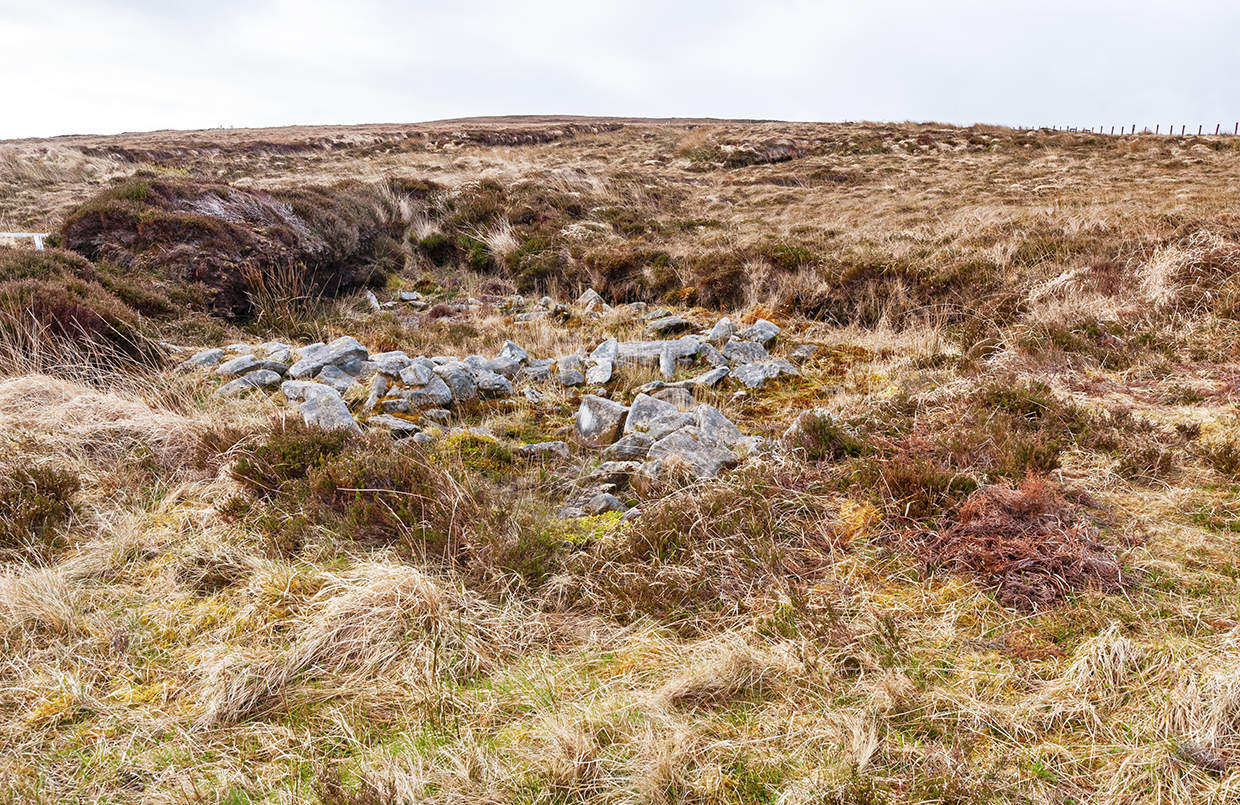
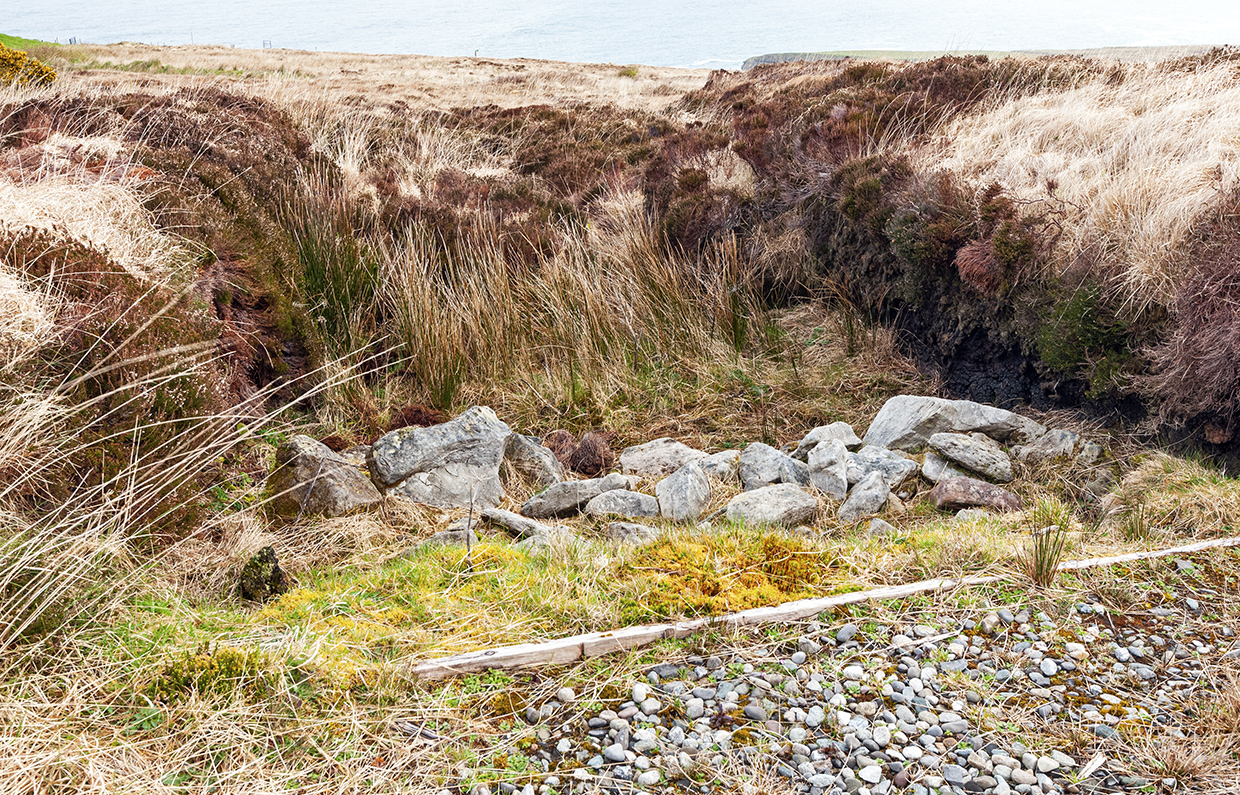
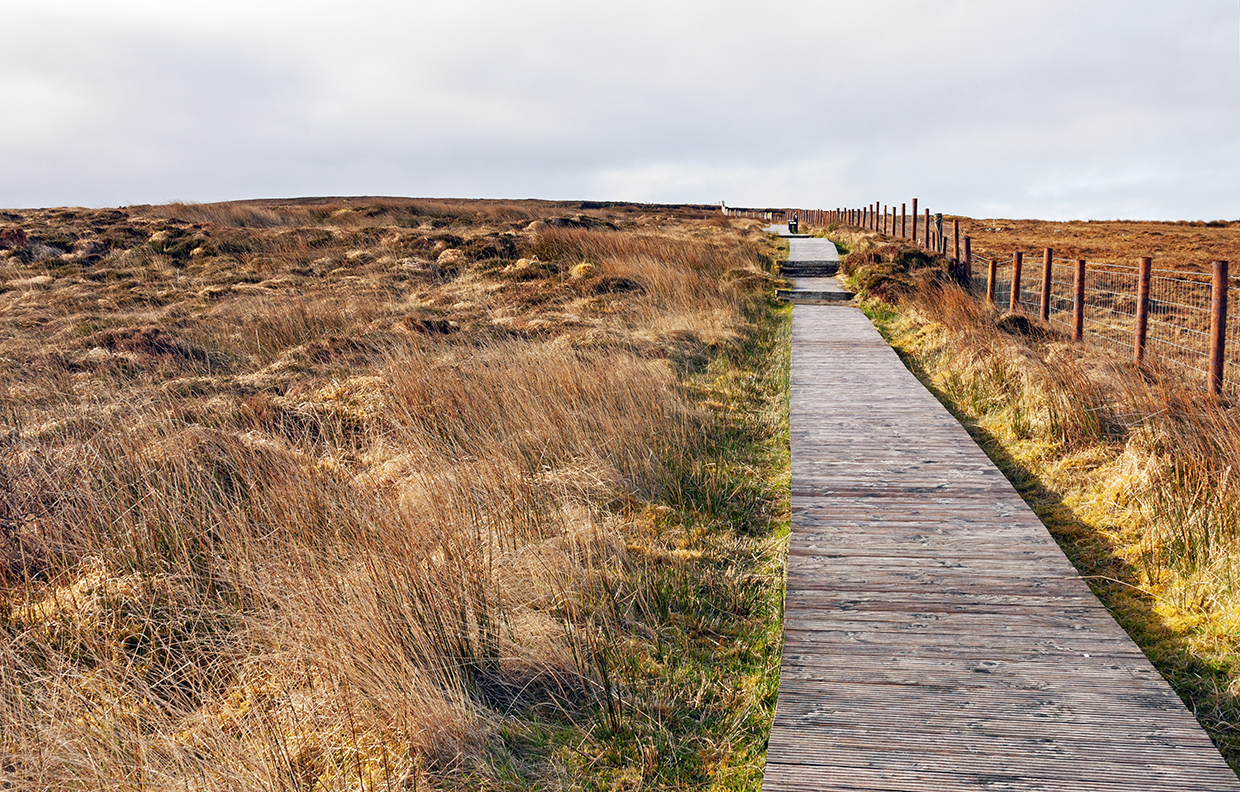
Final thoughts on the Céide Fields
I don’t remember how I found this site exactly, but knowing me I was simply looking for ancient sites in Ireland.
I did know that I wanted to visit this part of Ireland — County Mayo — on that trip.
And there it was on a map!
Upon further investigation I thought to myself, “This sounds really cool.”
I was so fortunate to actually visit it since it wasn’t yet open.
The travel gods were on my side.
I was so impressed by everything about the Céide Fields — from the stunning views to the beautiful Visitor Center to the walkway around the fields to the fields themselves.
This is one of Ireland’s historical treasures — and one that not enough travelers visit.
Hopefully you’ll now consider the Céide Fields for your trip to Ireland.
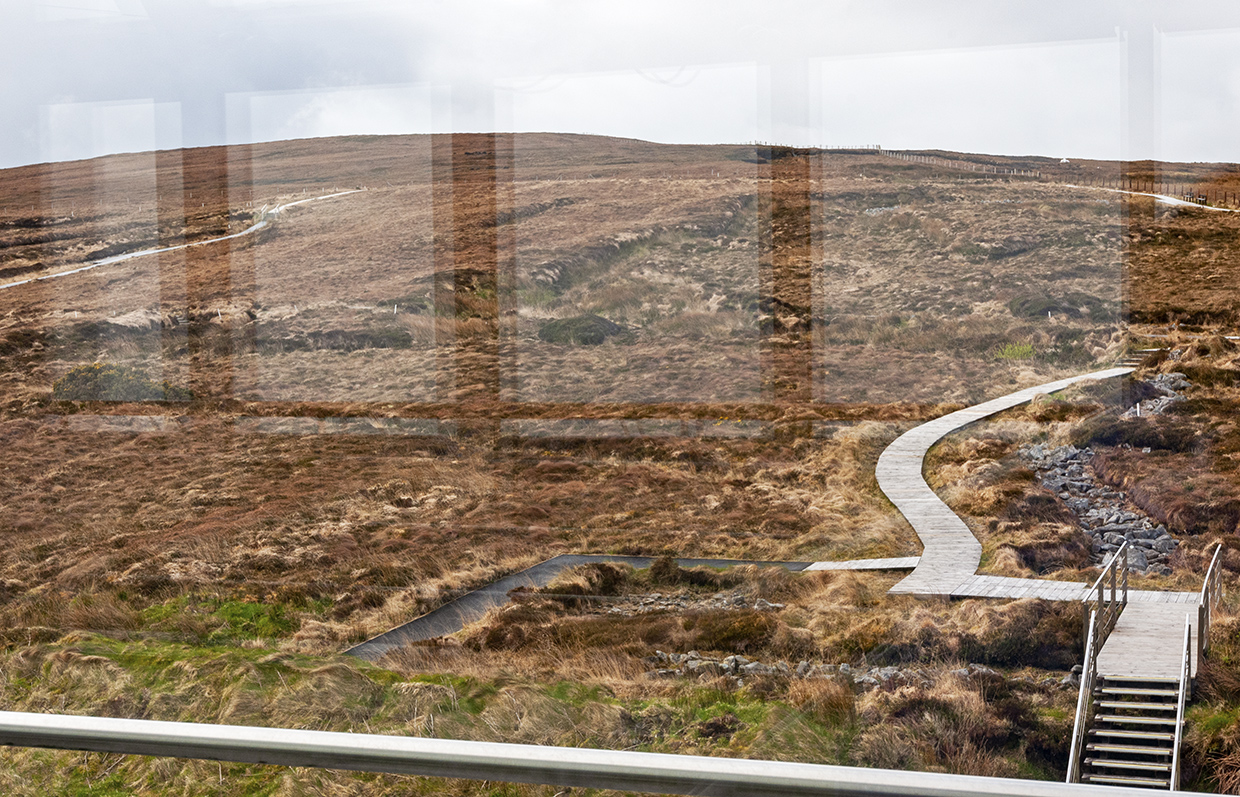
Logistics for visiting the Céide Fields
Do check the website for opening times but typically this site doesn’t open fully to the public until early April and remains open until the end October.
In winter, the Céide Fields are open to group bookings only.
Hours are 10:00 to 17:00 in spring and autumn and 10:00 to 18:00 in summer.
Cost is €5 per person so it’s an inexpensive site (and worth every euro cent).
Because you are up on a cliff about 110m tall and right by the sea, do be prepared for crazy weather — rain, winds, cold.
This is Ireland!
Wear protective clothing and good shoes.
While you don’t need hiking boots, sturdy sneakers/shoes — especially ones that have some waterproofing to them — will be helpful.
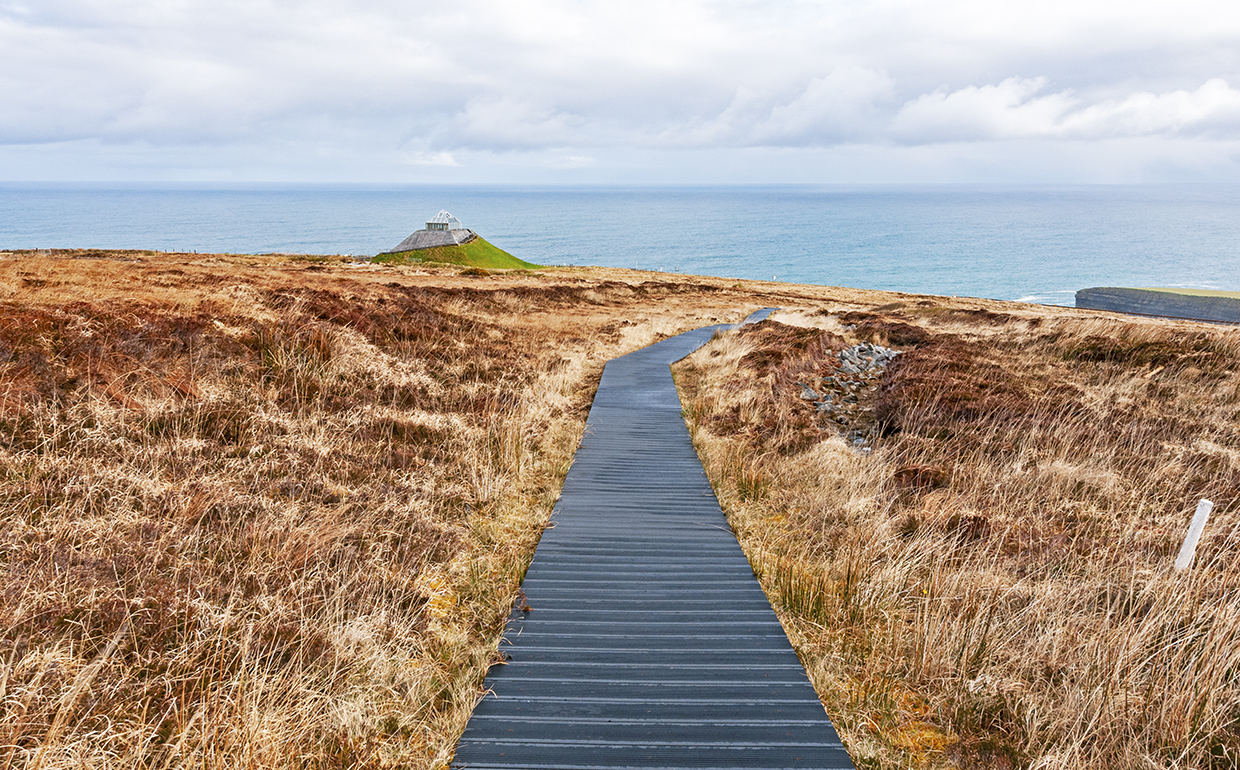
Please note that Wander Your Way does not recommend travel at this time due to the current global health situation with the COVID-19 pandemic. Furthermore, many destinations and attractions found on this website will not be operating although some places have opened. Please stay up to date using official sources like the WHO and CDC.
I do plan to continue to write about incredible destinations and to offer tips on travel to Europe, so that you will find some solace in these posts — so you dream about travel and learn about travel. This way when we can all travel again, you’ll be ready to go! For now, stay home (or close to home) and stay safe!
Disclaimer: This post contains affiliate links. This means I will earn a commission – at no extra cost to you — if you click on the link and purchase anything from these trusted companies. It helps Wander Your Way, a small business, stay in business. Thanks for your support!
Like it? Pin it!




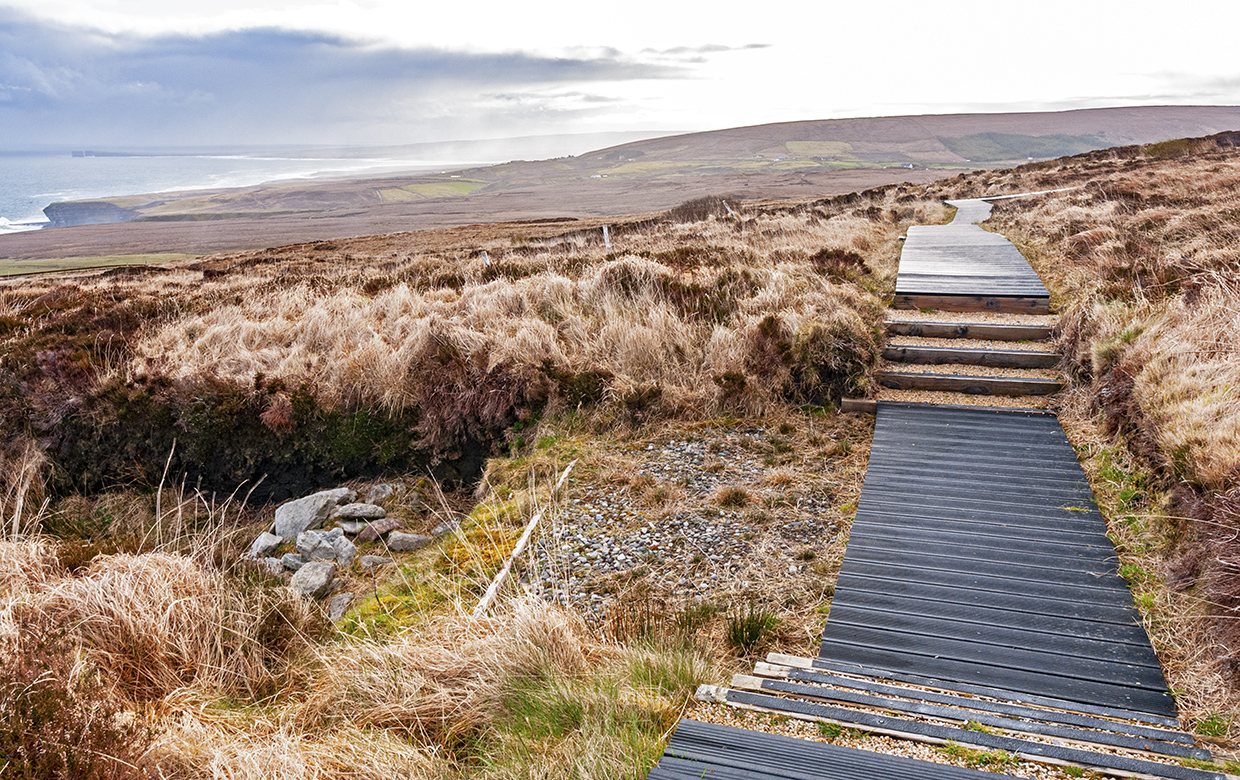








I’ve been interested in these sites since I moved to the UK. I find they have a fascinating and mysterious history. I did not know what you mentioned but if I go to Ireland I will save your article.
There are so many ancient sites in the British Isles. Do put the Céide Fields on your list. Plus the location is gorgeous!
Wow, hidden gem! I have never heard of this place and I loved hearing the history of it. The views look beautiful!
I agree that it’s hidden from the average traveler. I think school groups visit a lot. But it’s worthy of time, in my opinion.
I actually haven’t heard of this spot in Ireland before, but I love to visit historic sites and this one is probably the oldest one I have seen so far! Definitely one for the list.
I don’t know that I had heard of it until I found it on a map then read up on it. It’s pretty cool!